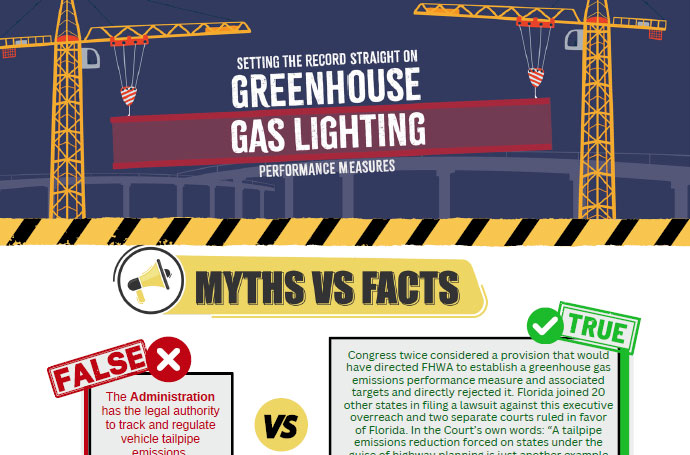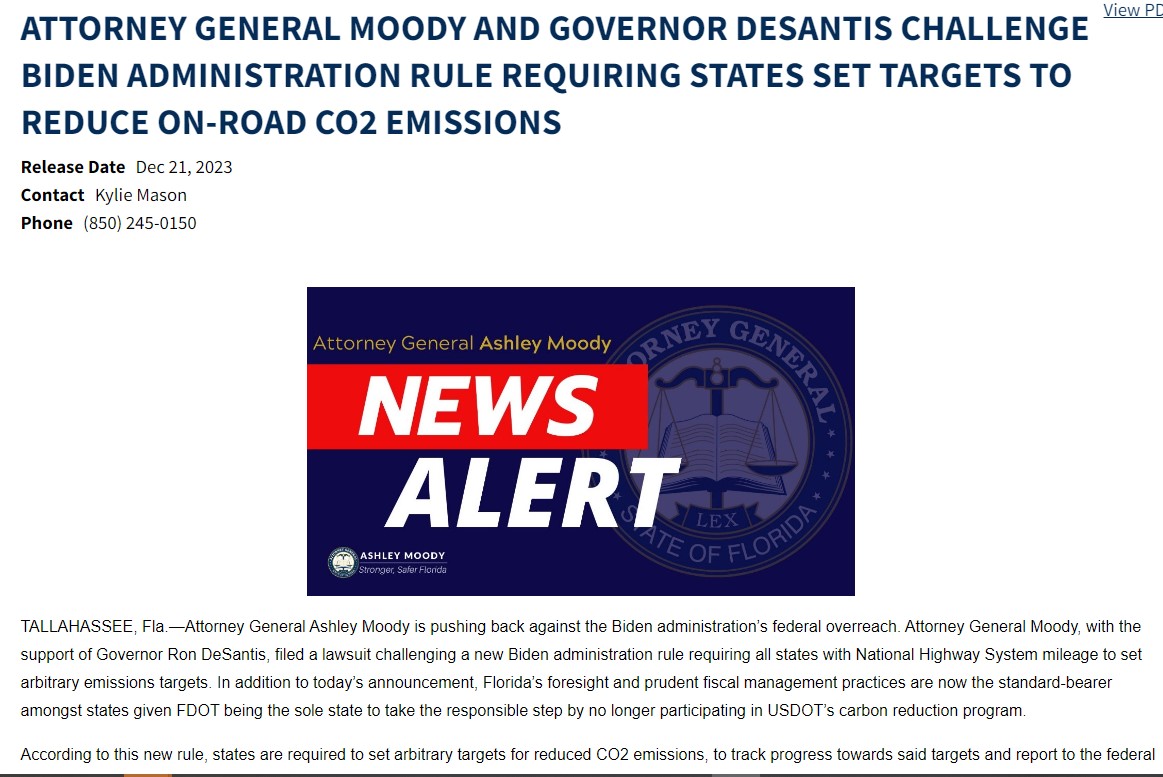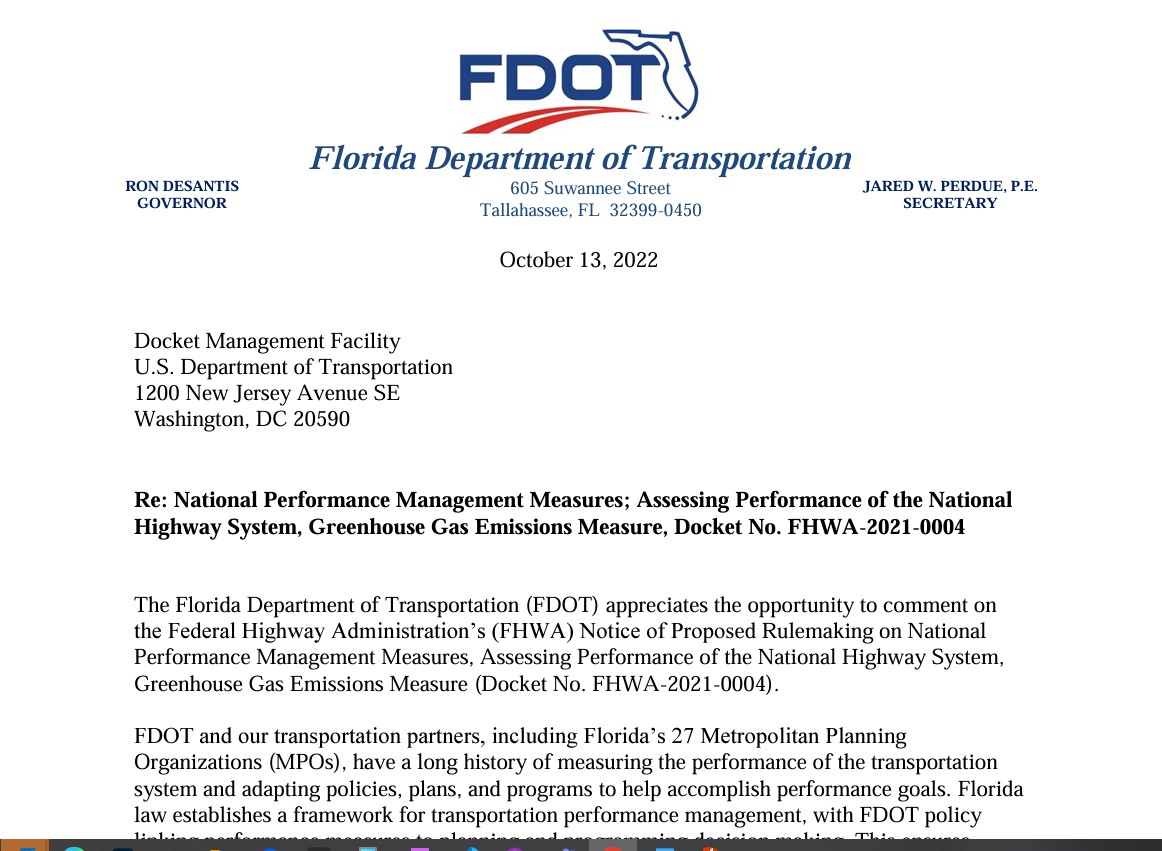The War Against the American Automobile
Within a month of taking office, President Biden committed all federal agencies to fight the supposed “climate crisis” by aligning their policies with elements of the Paris Agreement, Green New Deal, and ESG movement.
USDOT now considers “Climate and Sustainability” as a strategic goal and its quest to “Tackle the climate crisis by ensuring that transportation plays a central role in the solution. Substantially reduce greenhouse gas emissions and transportation-related pollution and build more resilient and sustainable transportation systems to benefit and protect communities.”
Rather than focusing on ways to increase throughput and highway capacity, USDOT seeks to force people out of their cars in one way or another whether that be through reducing lanes or issuing regulatory mandates to force electric vehicles on American commuters. Why would the government be so insistent on getting rid of one of the greatest inventions like the combustion engine?
In 2023, the Biden Administration published the, “U.S. National Blueprint for Transportation Decarbonization,” an 88-page document that includes a few telling signs of the real goal: increased reliance on publicly owned and operated transportation, “As more people use clean travel options and personal light-duty travel decreases, road lanes can further accommodate shared and active modes of transportation.”
While the federal government's obsession with electric vehicles is increasingly becoming an obsession that help's China, Florida continues its all-hands-on-deck approach to fight back through court challenges and educating Floridians on these mandates, emphasizing the importance of “fuel freedom” and consumer choice.
Greenhouse Gas Performance Measure
The initial draft of the IIJA required state transportation departments and Metropolitan Planning Organizations (MPOs) to set targets and monitor their progress in reducing greenhouse gas emissions.
However, Congress removed greenhouse gas emissions from the items that state and local agencies would be mandated to track. Despite this, the United States Department of Transportation (USDOT) and the FHWA mandated states to monitor greenhouse gas emissions. This decision put local entities in a position where they had to create new programs without any clear guidance on how their efforts would be evaluated.
In response, twenty states, including Florida, filed a lawsuit against the federal government to stop the implementation of the unauthorized greenhouse gas emissions mandate. Following this, two separate federal court decisions ruled in favor of the states. Florida, recognizing the potential impact on their freedoms, promptly challenged this rule. The court's decision validated Florida's stance, and we remain committed to protecting their freedoms from unjust mandates.
Carbon Reduction Program
The "Carbon Reduction Program" is a mandatory formula funding program imposed by the federal government on the states. This grant would only be delivered to the recipient if the predetermined criteria are met. It requires the states to submit strategies for reducing carbon emissions in the nation's transportation sector. The program focuses on tracking and reducing vehicle emissions, but some view it as intrusive government oversight.
The Florida Department of Transportation (FDOT) was among the many organizations concerned about the program because USDOT provided no clear guidelines. States were expected to create a strategy without guidance and risk penalties if they failed to meet metrics implemented by USDOT after submitting their strategy.
However, in November 2023, FDOT decided not to participate in the program and promptly communicated this to the USDOT. However, they have yet to receive any follow-up communication from USDOT.
Department of Energy’s Petroleum Equivalency Factor (“PEF”) Rule
With the recent PEF rule, it's clear that the Biden Administration is targeting gas-powered vehicles. This rule gives electric cars a 666 percent boost in fuel economy, distorting the behavior of manufacturers and reducing average fuel economy. The implications of this rule are damaging - it hurts consumers, strains our roads, and sets back efforts to reduce carbon emissions. Overall, the PEF rule appears to be arbitrary, capricious, and in violation of the law.
Emissions Standards for Light-Duty and Medium-Duty Vehicles
The U.S. Environmental Protection Agency (EPA) is finalizing tailpipe emissions standards for model year 2027-2032 passenger vehicles. The regulation will require the country’s vehicle fleet to meet an average of 82 grams/mile tailpipe emission target by 2032, which is the most stringent target the EPA has ever issued.
The main goal of this regulation is to speed up the adoption of electric vehicles (EVs). The EPA expects that this policy will lead to EVs representing nearly 70 percent of new car sales by 2032.
Due to low consumer demand, U.S. automakers have already stalled planned investments in EVs. In October 2023, Ford Motor Company announced an estimated $36,000 loss on each of the 36,000 electric vehicles it delivered and will slow down the production of EVs, shifting investment to its commercial vehicle unit.
The current administration aims to implement its costly Green New Deal agenda, bypassing both Congress and the will of the people, which opponents argue will only harm American families, increase gas prices, and heighten the country's dependency on foreign adversaries like China.
Emissions Standards for Heavy-Duty Vehicles
The EPA has expanded its rule on light and medium vehicles to include heavy-duty trucks. According to the new regulations, by 2032, 30 percent of 'heavy-duty vocational' trucks and 40 percent of short-haul 'day cabs' must be zero-emission. This new mandate carries significant implications for the industry.
Some industry professionals believe that this mandate needs to be revised. Chris Spear, president and CEO of the American Trucking Associations, stated, "The post-2030 targets are completely unattainable given the current state of zero-emission technology, the lack of charging infrastructure, and restrictions on the power grid."






